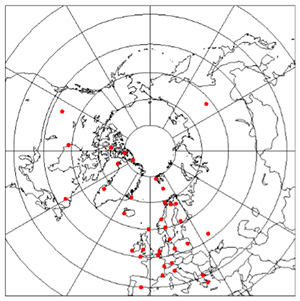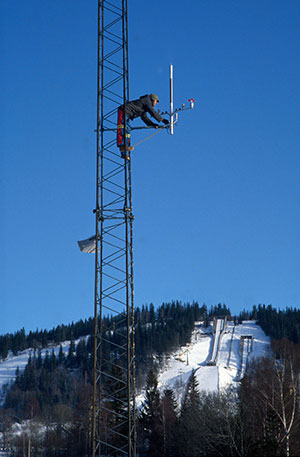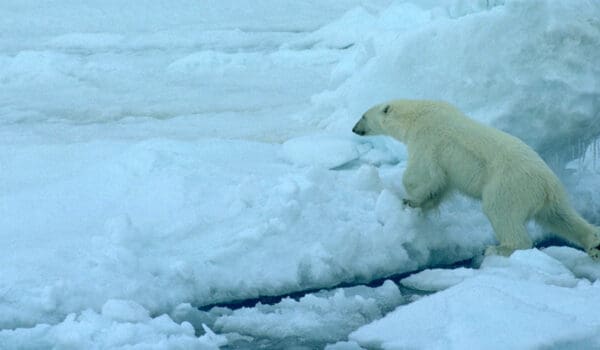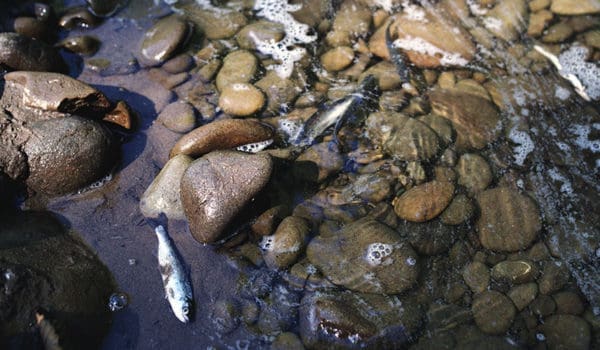In the 90s, climate research became more and more international due to the rise of the internet. Climate researchers could exchange information all around the world in the blink of an eye, and data could be stored and shared through joint databases.
These databases became central hubs for information, data and reports for observational data from all around the world, and NILU contributed to this: Since the institute had played such a central role within observation and mapping activities of the ozone layer over
Europe, NILU continued with establishing the «Atmospheric Database for Interactive Retrieval» (NADIR) in 1990. The institute also became part of AMAP (Arctic Monitoring and Assessment Programme), with responsibility for research on composition, transport and accumulation of environmental pollutants in the High North.
Building databases for EU-research
Throughout the years, NILU has played a central role in the collection of observational data for atmospheric research, both in Europe and worldwide. All together the institute has been responsible for storing the research data of more than 50 EU projects.
These databases are an important contribution to the international climate research since all data is freely accessible and can be used for free for further studies.
Important climate projects and activities at NILU in the 90s

1990: NILU’s Atmospheric Database for Interactive Retrieval (NADIR) is established to store national total ozone data. In addition, NILU is also involved in the establishment of the Global Emissions InitiAtive (GEIA), that bridges environmental research and policy by bringing together people, data and tools to create and share information about chemical emissions into the atmosphere.
1991: NILU is designated a data centre for the ozone campaign under the lead of the EF/EFTA cooperative project “European Stratospheric Ozone Experiment” (EASOE), in addition to the preparation of experimental designs and model calculations. Eleven countries participate in studying both the development of the ozone layer over the Arctic and the potential for a similar ozone hole over Antarctica.
1992: In cooperation with the Lillehammer Olympic Organizing Committee, institutes and industry, NILU develops the monitoring and planning system for environment and air pollution, ENSIS, which present results in near real time. The system was first used during the Olympic Games in Lillehammer, but later it was also used in industrial areas, towns and villages.
Upon request of the Environmental Protection department, NILU establishes a monitoring station to observe UV-radiation in Chile, in connection with ozone layer problems over Antarctica.

1994: NILU celebrates its 25th anniversary and moves into a new building at Kjeller. Later that year, the department in Tromsø is established and NILU is tasked to serve as topic centre on air quality for the European Environmental Agency (EEA). Together with several other institutes, NILU acts as a joint centre of competence, and works with methods and tools to map and assess the impact of European air quality. In this context, NILU compiles air quality reports for Europe and participates in the development of systems for the facilitation and dissemination of information about European air quality.
During the Olympics in Lillehammer ENSIS, a monitoring and planning system for environmental and air pollution, was used for the first time.
1995: Analyses of ozone data show that the ozone layer over the Arctic has been subjected to chemical degradation during the last seven years. As a result of the coordinator role in EASOE and the “Second European Stratospheric Arctic and Mid-Latitude Experiment” (SESAME), NILU is also given coordinator responsibility for the new EU project OSDOC, which focuses on ozone sonde measurements. Meanwhile, NILU serves as secretariat for GEIA, which strives to make national and regional emission inventories available for researchers working on global and regional atmosphere chemical issues.
1997: Together with the University of Oslo (UiO), NILU performs surface and under-water measurements of UV radiation in a lake close to Ny Ålesund at Svalbard. The main aim was to investigate how UV radiation was influencing life in the lake.
1998: NILU and UiO’s Institute for Geophysics undertake calculations of radiative forcing for all gasses that are included in the Kyoto protocol: CO2, methane, nitrous oxide, hydrofluorocarbons, perfluorated substances (PFCs) and sulphurhexafluoride(SF6). This contributes to the IPCC’s work on the further extension of the protocol.




